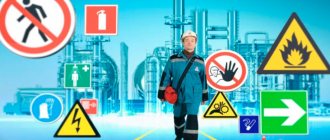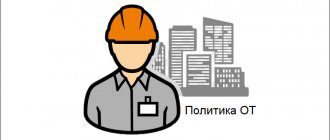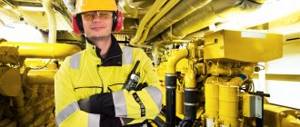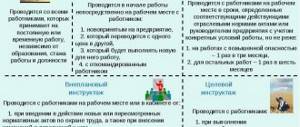Legal regulation
Let’s say right away that the Labor Code of the Russian Federation says nothing about the main functions of the labor protection service. In particular, Article 217 of the Labor Code of the Russian Federation, dedicated to this structure, does not explain what functions are assigned to the labor protection service. It reflects only the main organizational aspects. This article refers to the Resolution of the Ministry of Labor of Russia dated February 8, 2000 No. 14 (hereinafter also referred to as Resolution No. 14). He approved Recommendations for organizing the work of the Occupational Safety and Health Service in the organization. Including the tasks and functions of the labor protection service.
Despite the recent adoption of this resolution of the Ministry of Labor, the functions of the labor protection service at the enterprise listed in it have not lost their relevance. In 2014, this document was updated by order No. 96 dated February 12.
Nuances of structure management
There are certain nuances in the work and management of an occupational safety department:
- the functioning of the service in the organization must take place in accordance with the established schedule and plan, which are approved by the head;
- work places for service personnel should be located in dedicated rooms with a set of organizational equipment and communications;
- specialists cannot be involved in tasks that are not typical for them, which are not provided for by the Labor Code of the Russian Federation, as well as internal documents;
- The department premises should be convenient for visiting.
Tasks
The most basic functions of the labor protection service in an organization depend on the tasks facing this structure. And the Ministry of Labor includes the following 5 positions:
1. Organization of compliance by personnel with labor protection requirements.
2. Monitoring compliance by personnel:
- laws and other regulatory legal acts on labor protection;
- collective agreement;
- labor protection agreements;
- other internal regulatory requirements of the organization.
3. Organization:
- prevention of industrial injuries, occupational diseases;
- work to improve working conditions.
4. Information and consultations for the organization’s personnel and its manager on labor protection issues.
5. Study and implementation of modern labor protection practices, as well as promotion of labor protection.
Also see “How to ensure the functioning of the OSMS: actions and plans of the employer.”
When is it necessary to create a labor protection service?
In order to fully comply with occupational safety requirements and ensure administration control in this area, an occupational safety service must be created at every enterprise where the number of employees exceeds 50 people. An occupational safety engineer must be trained and certified in this area.
The administration of the enterprise decides to create a service or introduce a specialist position into the staffing table. If there is no service or an employee performing the functions of a specialist is not assigned, then this work is transferred to the shoulders of the head of the facility or his deputy.
You can also hire a third-party OT outsourcing organization. It is important that this company has all the permits for this type of activity, and must also be accredited.
You cannot hire an organization that conducts a special assessment of working conditions. The employer determines the structure of the organization.
Functions
Resolution No. 14 includes 24 main functions of the labor protection service at an enterprise. According to it, the functions of the labor protection service include:
| 1 | Accounting and analysis of condition and causes:
|
| 2 | Assistance to departments:
|
| 3 | Organization and participation in special assessment of working conditions |
| 4 | Conducting, together with representatives of the relevant departments and with the participation of authorized (trusted) persons for labor protection, trade unions or other representative bodies authorized by employees, inspections and surveys for compliance with labor protection requirements:
|
| 5 | Participation in the work of acceptance commissions regarding compliance with labor protection requirements:
|
| 6 | Coordination of design, engineering, technological and other documentation regarding labor protection |
| 7 | Development together with other departments of plans and programs:
Providing organizational and methodological assistance for the implementation of planned activities. |
| 8 | Participation in the compilation:
Also see “Sample agreement on labor protection at the enterprise.” |
| 9 | Assisting department heads in compiling lists of professions and positions, according to which:
|
| 10 | Organization of investigations into industrial accidents Participation in the work of the accident investigation commission Preparation and storage of documents with labor protection requirements in accordance with established deadlines (acts in form N-1, etc., reports on special assessments of working conditions) |
| 11 | Participation in the preparation of documents for the appointment of insurance payments due to accidents at work or professional. diseases |
| 12 | Preparation of reports on safety and working conditions according to Rosstat forms |
| 13 | Development of training programs on labor protection for personnel and managers Conducting introductory training on labor protection:
Also see “Sample of a standard induction program for occupational safety and health.” |
| 14 | Organization of timely training on labor protection for staff and managers, participation in the work of commissions to test knowledge of labor protection requirements. |
| 15 | Drawing up (with the participation of heads of departments) lists of professions and types of work for which labor protection instructions should be developed. |
| 16 | Methodological assistance to heads of departments in the development and revision of:
|
| 17 | Providing units:
|
| 18 | Organization and management of the work of the labor protection office, preparation of information stands, labor protection corners in departments. |
| 19 | Organization of occupational safety meetings |
| 20 | Promotion of security through radio broadcasting, TV, films, short-circulation print, wall newspapers, shop windows, etc. |
| 21 | Communication to staff:
|
| 22 | Consideration of letters, statements and complaints from personnel on issues of labor conditions and safety. Preparation of proposals to the manager (heads of departments) to eliminate the deficiencies found. |
| 23 | Control for:
|
| 24 | Analysis and generalization of proposals for spending funds from the labor protection fund (if any) Development of directions for their most effective use Preparation of justifications for the allocation of funds to the organization from the territorial labor protection fund (if any) for measures to improve working conditions and labor protection |
It is quite difficult to say what is not the function of the labor protection service. Most likely, Resolution No. 14 contains a closed list of functions. This means that everything beyond it is not related to the implementation of the functions of the labor protection service.
Also see “Occupational safety specialist (engineer): functions in the enterprise.”
Read also
15.10.2017
What it is
The presented unit has the task of preserving the life and health of the enterprise’s workers. For this purpose, the employer creates the specified service on the basis of regulatory documents. The main personnel of the department are obliged to carry out legal, sanitary, hygienic, medical, preventive and other special organizational and technical measures that are aimed at minimizing the number of injuries and damages, occupational diseases and the number of other emergencies that occur with employees during work.
Service staff
Note! If the company has a small number of employees, then one specialist or an employee appointed by management who has been trained and has the right to do this can perform the duties.
Based on the decisions made, the employer independently establishes definitions and subordination. The establishment and management of the labor protection service, the functions, tasks and rights of employees are established by him in accordance with current legislation.
Who does the labor protection service report to in the organization?
For many facility managers, the question of who the occupational safety service reports to has become relevant.
According to general provisions, there are several nuances of this aspect:
- Subordination according to the hierarchy is carried out to the immediate supervisor, despite the fact that this function was assigned by administrative act to one of the deputies.
- The department is organized independently, and there is a head in the structure.
- The department interacts with authorities involved in state supervision in the field of occupational safety and health.
- According to job responsibilities, the department is required to follow regulatory documents, local acts, standards, instructions and regulations on occupational safety.
The main document regulating the activities of the service is the Labor Code.
Classification of events
Important! Occupational safety measures can be technical, therapeutic and preventive, sanitary, organizational and social. There are also those aimed at providing personal protective equipment.
For technical procedures:
- equipment is being modernized and systems with automatic and remote control are being installed;
- technological processes are improved and updated, control and safety devices are installed;
- technological operations are automated, reconstructed and mechanized.
Events
During treatment and preventive procedures, regular examinations are carried out, medical stations are created, and sanitary facilities are improved.
Important! In the last three procedures, organizational measures are taken to achieve safe work, special uniforms and personal protective equipment are issued in accordance with the Standard Industry Instructions from the Ministry of Labor.
In addition, local standards are being developed, clear access to hazardous work is being organized, a health log is being maintained, and training is being conducted according to the standards of the Ministry of Labor.
Event Planning
Occupational safety measures are planned taking into account regulatory and collective documentation, hazardous and harmful production factors, and instructions received from regulatory and supervisory authorities. Also, when compiling them, the organization’s policy, occupational safety goals, risk analysis, and documents indicating non-compliance of individual work tools with regulations from government agencies are taken into account.
Planning
In addition, all the results of earlier examinations, identified inconsistencies, and the results of the implementation of examination activities are taken into account. It is equally important when planning events to study how they were carried out earlier, how certification of workers was carried out. Based on the data obtained, effective actions are drawn up to achieve the goals set by the manager.
In general, labor protection is a mandatory procedure to maintain the safety of the production process, comply with legislation and eliminate hazardous factors. These are documented activities that must be carried out strictly at all production sites.










